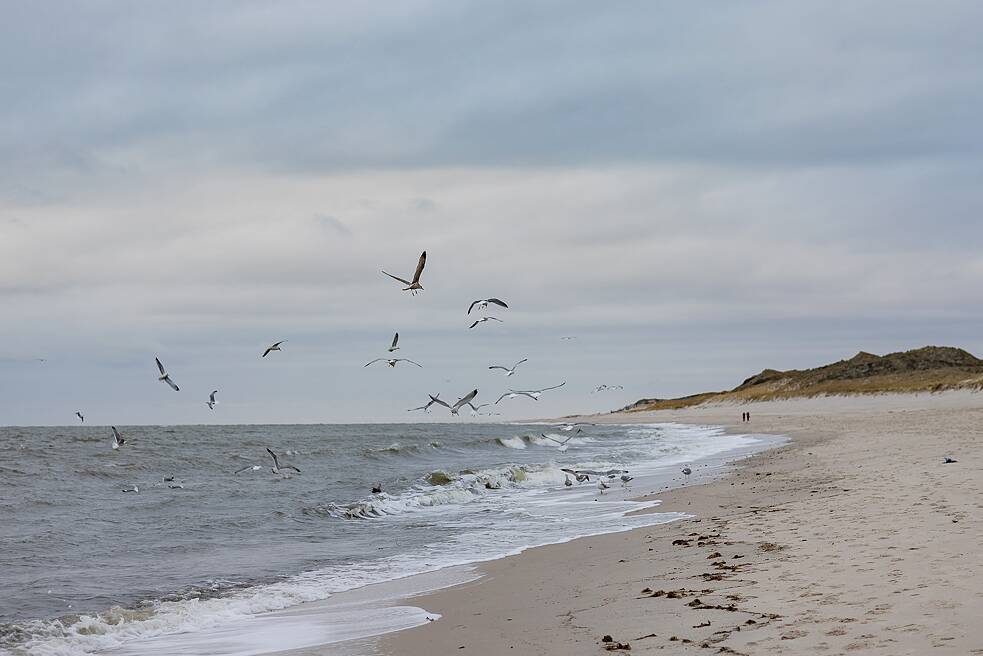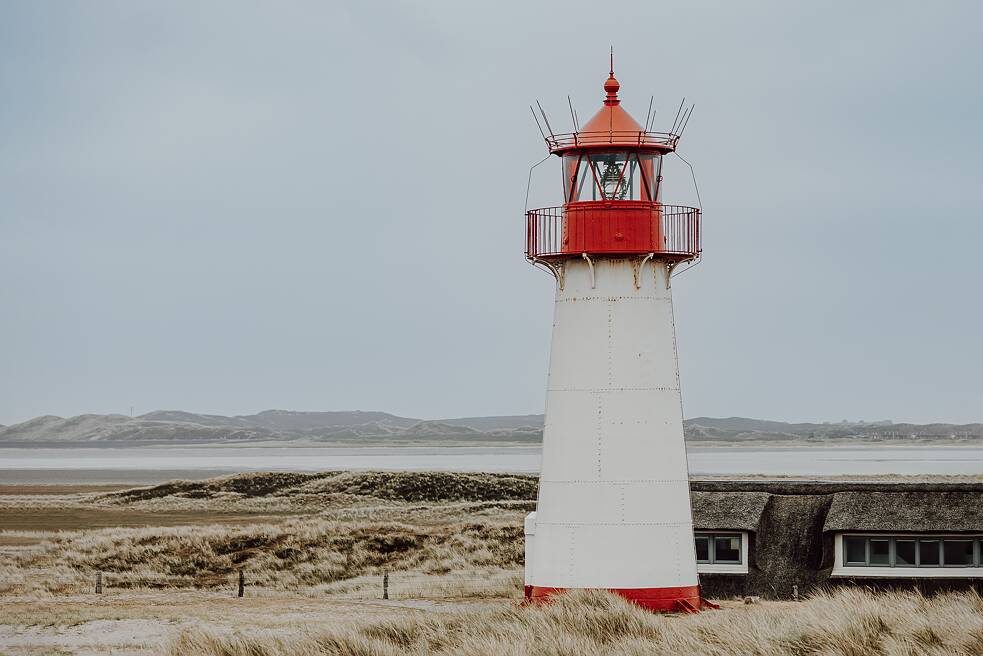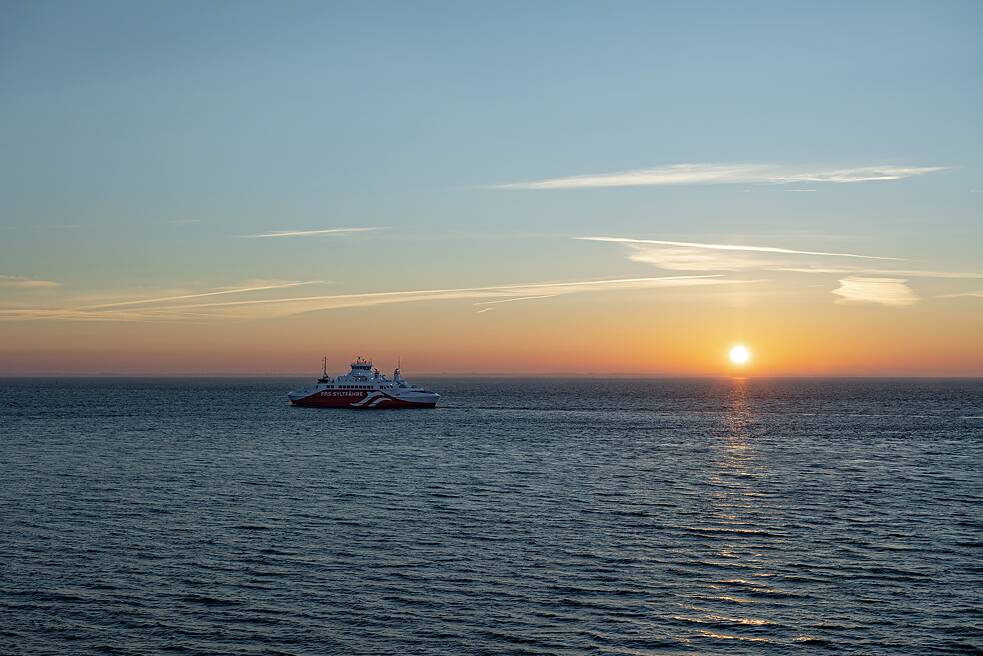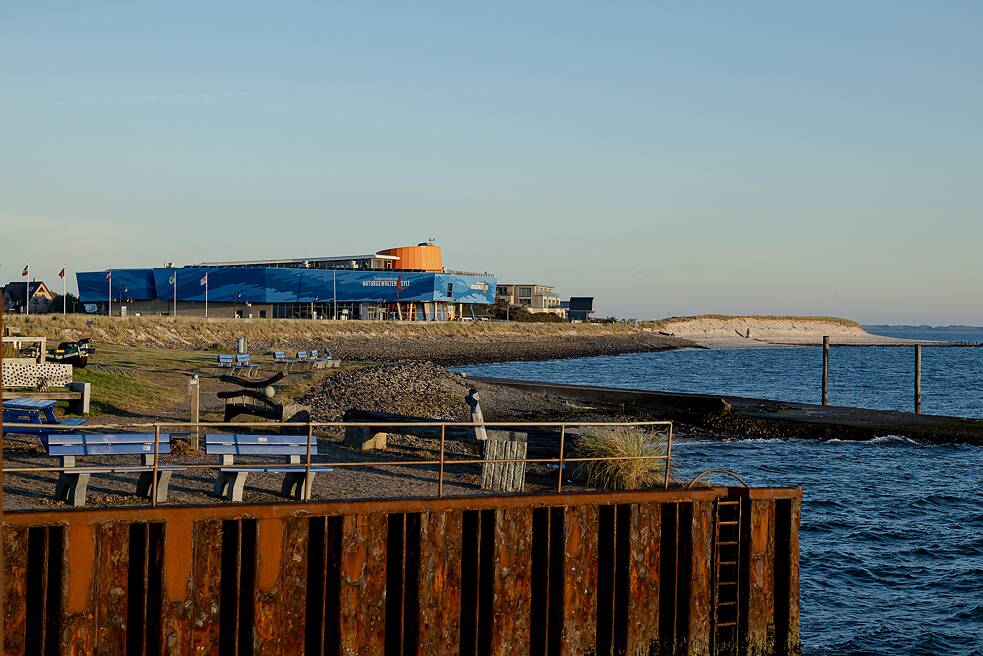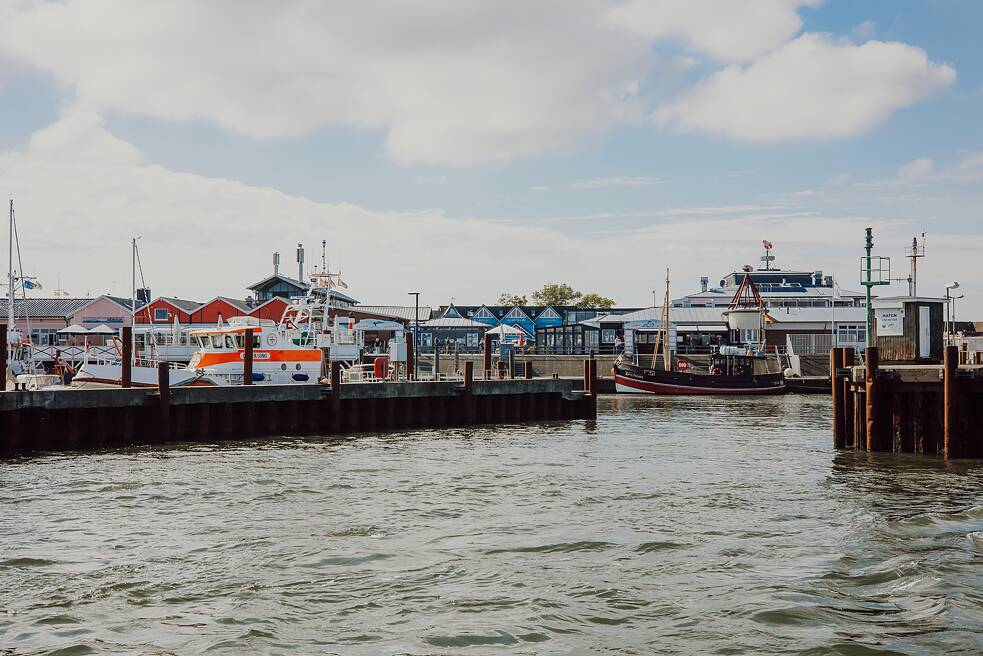List harbour, the smallest in our collection, is located not far from Germany’s northernmost point on the North Sea island of Sylt. From her desk at the Naturgewalten museum, Melanie Steur enjoys an unobstructed view of the sea and harbour. As the ferry sets off for the Danish island of Rømø, gently rocking over the waves, the press officer and mudflat guide reflects on the harbour, the sea and life on a small island.
I love being at the harbour because it has such a unique atmosphere. From my desk, I have an unobstructed view of the harbour – of the boats and the ferry shuttling between Rømø and List. I often take the ferry to Rømø myself because I like to see the island where I live from the water. The harbour always draws a certain crowd of people, many of whom come here for the fish sandwiches. I know a lot of the people who work here, too. Despite its size, the harbour feels like a gateway to the world.Alongside the ferry, you can see the excursion boats “Gret Palucca” and the “Rosa Paluka”, which regularly sail in and out of the harbour. There are also private sail boats from the yacht club and our sea rescue cruiser, the “Pidder Lüng”. Not far from List harbour at the northern tip of the island, the so-called Ellenbogen is Germany’s northernmost point.
An island life
I wasn’t born on Sylt. I’m originally from Münster in Westphalia, but I’ve lived on the island since 2009. My first experience of Sylt was in 1990 when I came here as a child for a health retreat. Since then, I’ve spent every summer family holiday here. When I was 19, after finishing school, I returned to Sylt to do a voluntary ecological year in Braderup. I then went to university and trained as an editor in Westphalia. Eventually though, I moved back to Sylt and worked for the Sylter Rundschau newspaper in Westerland. I now work for the Erlebniszentrum Naturgewalten, a museum about the forces of nature, in List.Even though the island isn’t big, there’s always lots going on here, with so many tourists coming and going. Visitors often see the island differently than the locals. Take the wind, for example. Visitors might say: “It’s stormy out there!”, whereas for locals “It’s just a breeze”. Many older islanders still speak Low German, or Sölring, the Sylt dialect. “Moin Moin” is a staple of Sylt’s vocabulary. “Moin“ literally means “morning”, but is used as a friendly greeting at any time of the day.
If I had to, I could live somewhere other than by the sea. But I don’t want to. I spend a lot of time outdoors. Nature here is incredible, changing with each season. As we head into the darker months, we look forward to cosy evenings with tea and candlelight, while outside, the wind howls and the rain lashes against the window panes. We bundle up in warm clothes and go outside to watch the stormy seas. In summer it’s a completely different story. We wear beach gear and flipflops all the time, ready to jump into the water whenever we feel like it.
A museum in the harbour and the mudflats
At the Naturgewalten museum, where I do the press work, we collaborated with the island’s nature conservation organisations to create our exhibition. It’s divided into three sections: “Living with the Forces of Nature”, which is about the animals and plants in the Wadden Sea National Park. Then there’s the “Forces of the North Sea” section, which informs visitors about storm tides, sea rescue and wandering dunes. And the third section, “Climate Research”, is dedicated to research and current weather events. We also have the 360-degree Sylt Dome, a planetarium where visitors can sit back in armchairs surrounded by images of the island.Apart from press work for the museum, I also lead guided tours of the mudflats. This landscape may seem unremarkable at first glance. To the untrained eye, it’s a dreary, muddy expanse. It’s not especially inviting and has a very distinct smell. But if you explore it with someone knowledgeable, you discover shells buried in the mud, different types of worms, the lugworm. You can find out about the tiny animals, the shore crabs. This is a very unique habitat because it is intricately tied to the tides. Twice a day, the animals are left exposed to the air. They have to adapt to these special conditions. Alongside the wildlife in the mudflats, the island is home to numerous other animals – sheep, foxes, raccoon dogs, birds and squirrels.
My favourite month here on the island is February, when winter gives way to spring. At this time of year, you can skate on the island’s frozen lakes, and occasionally even the Wadden Sea freezes over. You still have to dress warmly, but the days begin to brighten. And on 21 February, the big island festival known as “Biikebrennen” takes place, when bonfires are lit all across the island. This tradition was originally a way for islanders to bid farewell to whalers.
Verena Hütter recorded the story. A big thank you goes to Melanie Steur for sharing her harbour story, to Susan Guetari for the pictures and to the Erlebniszentrum Naturgewalten at List harbour on the island of Sylt.
Related Links
October 2024

